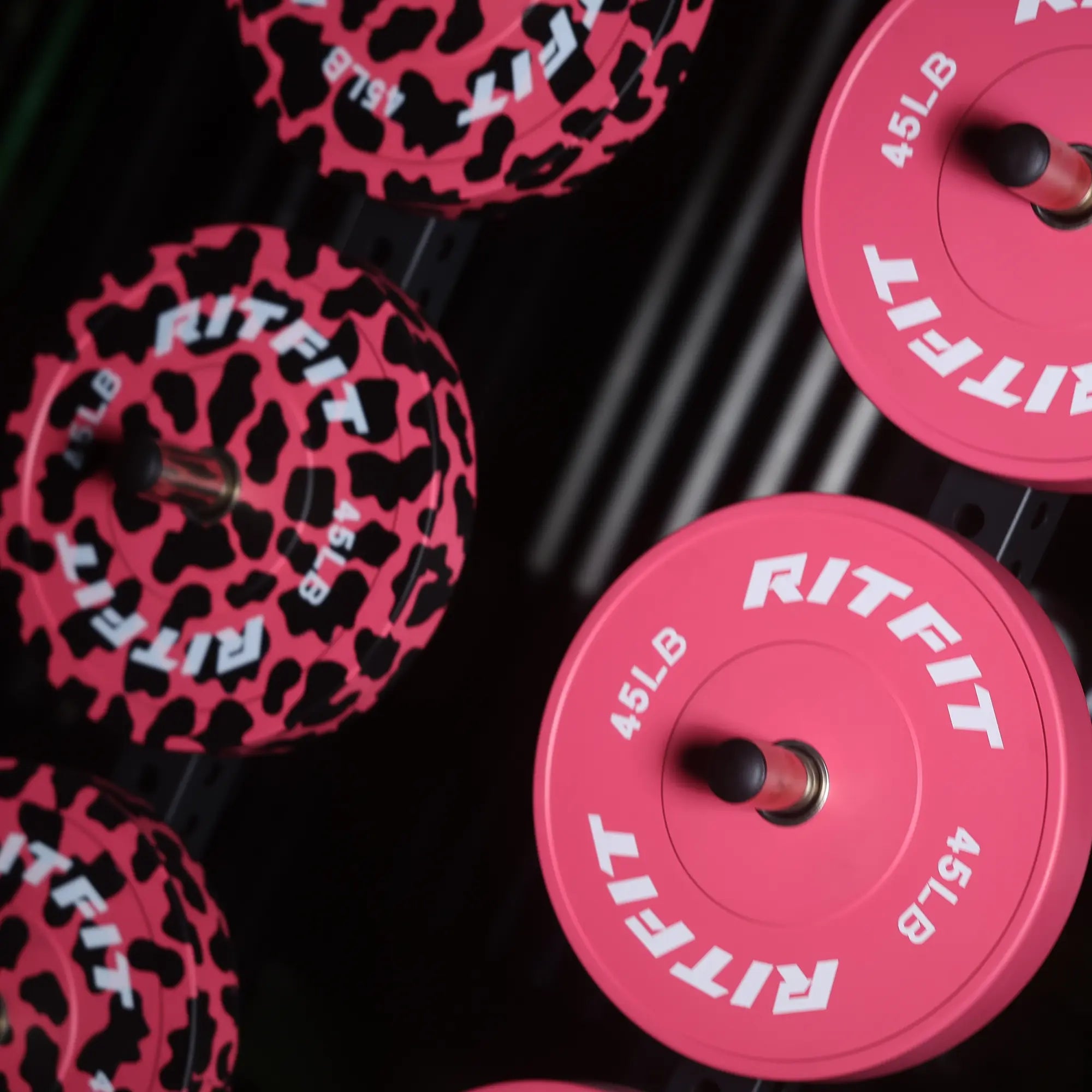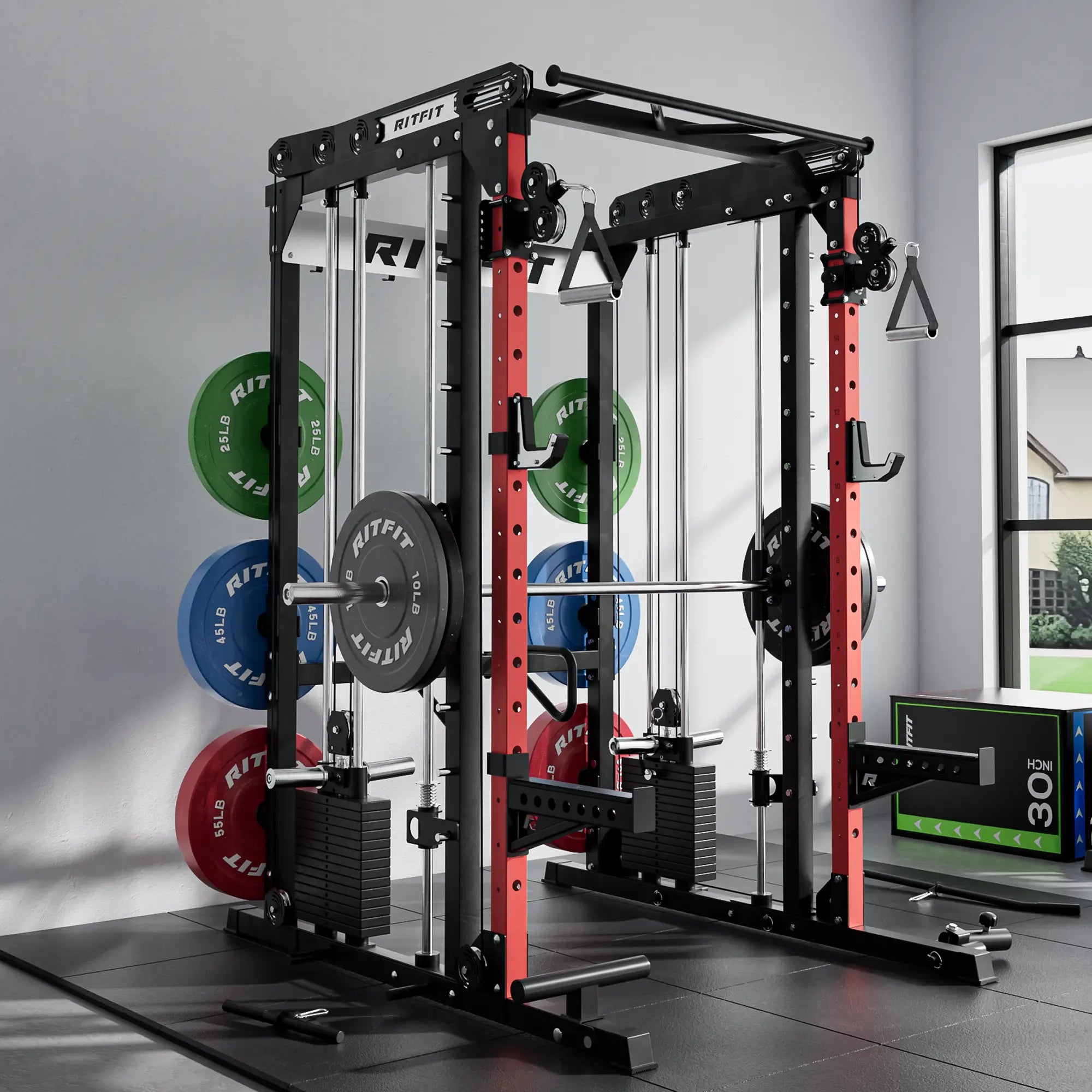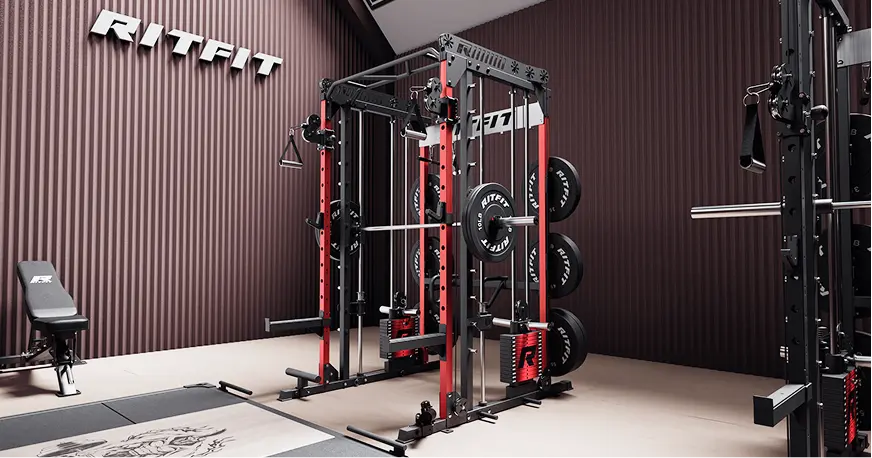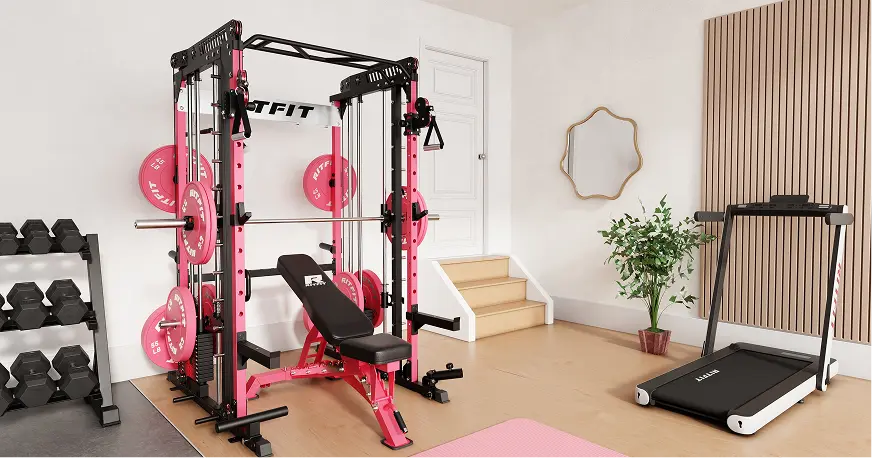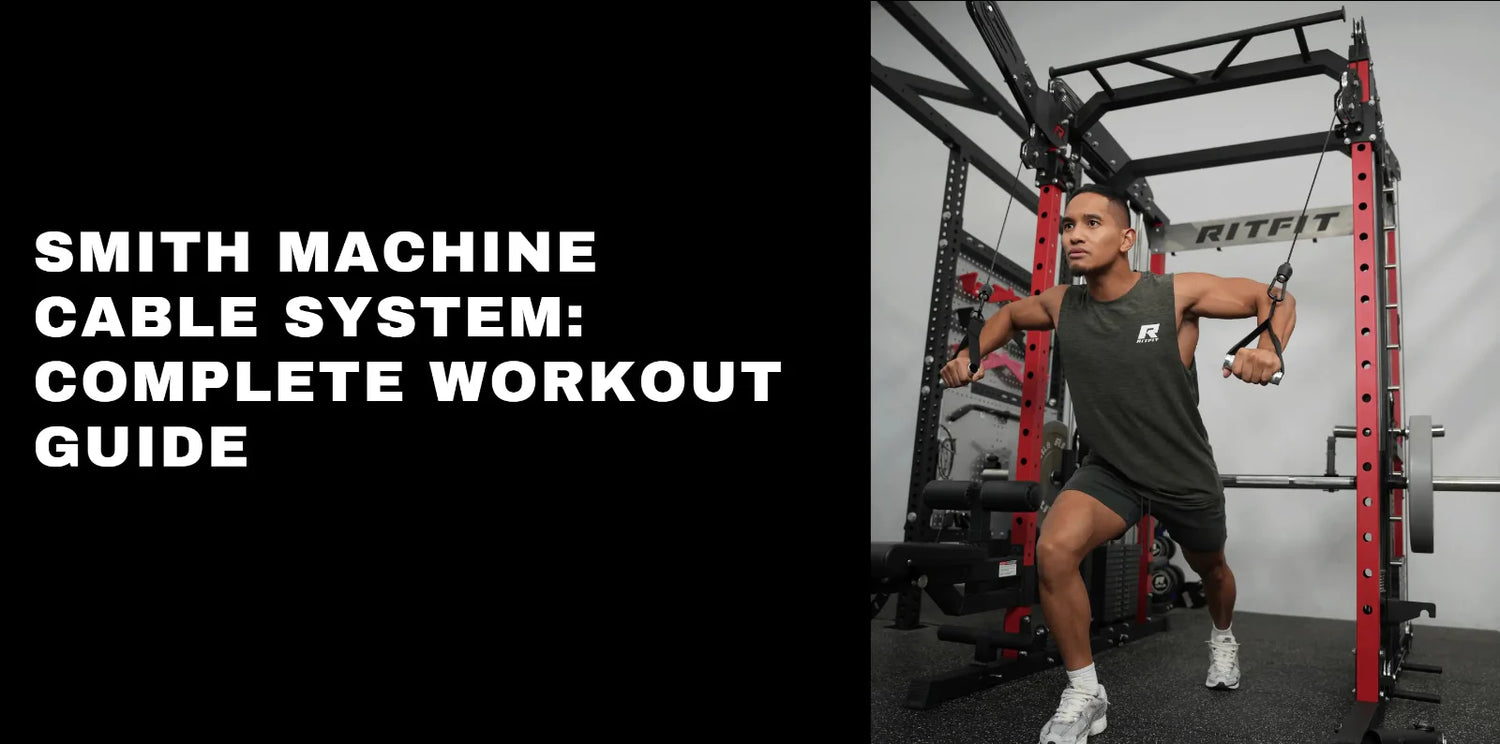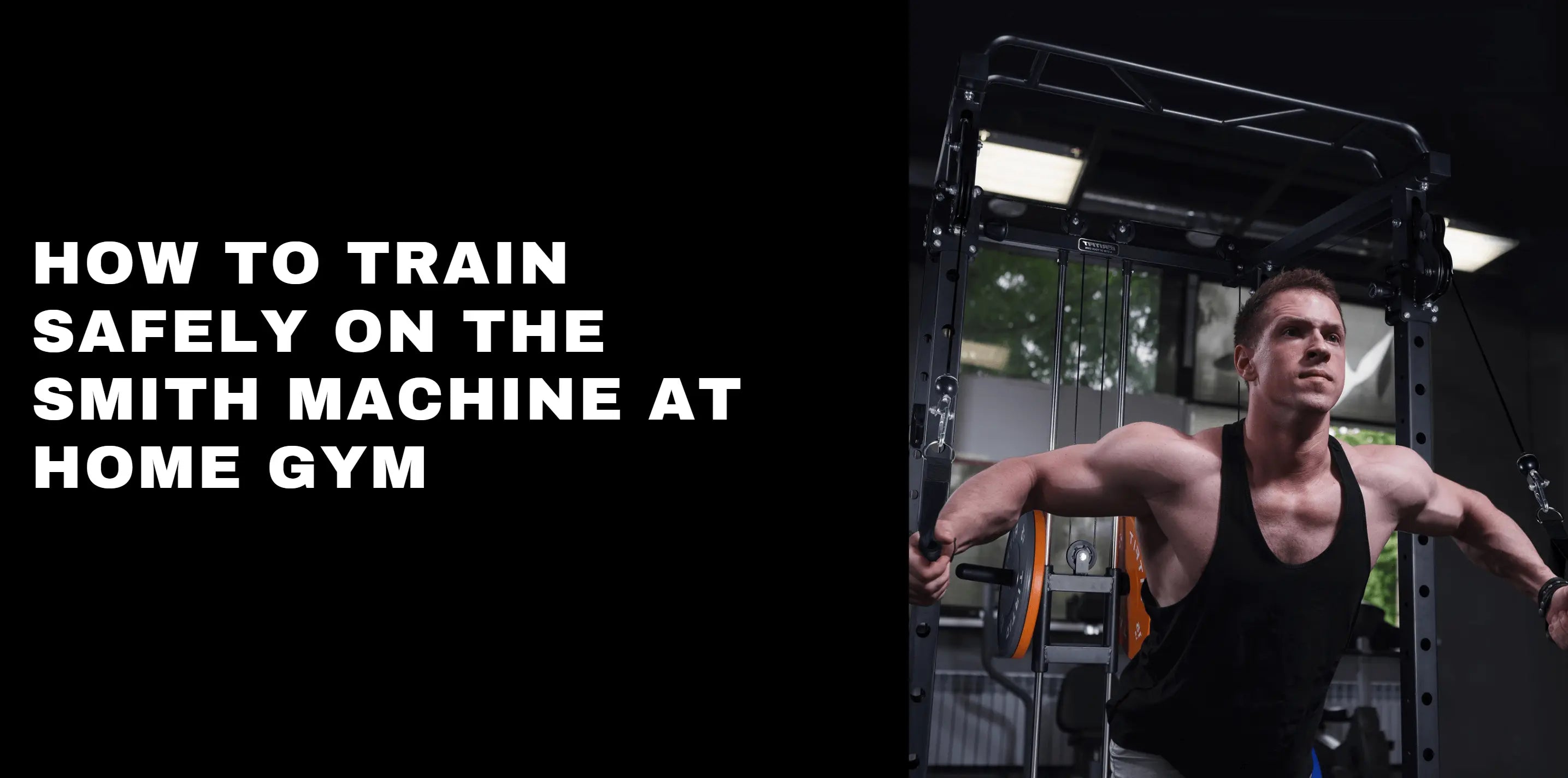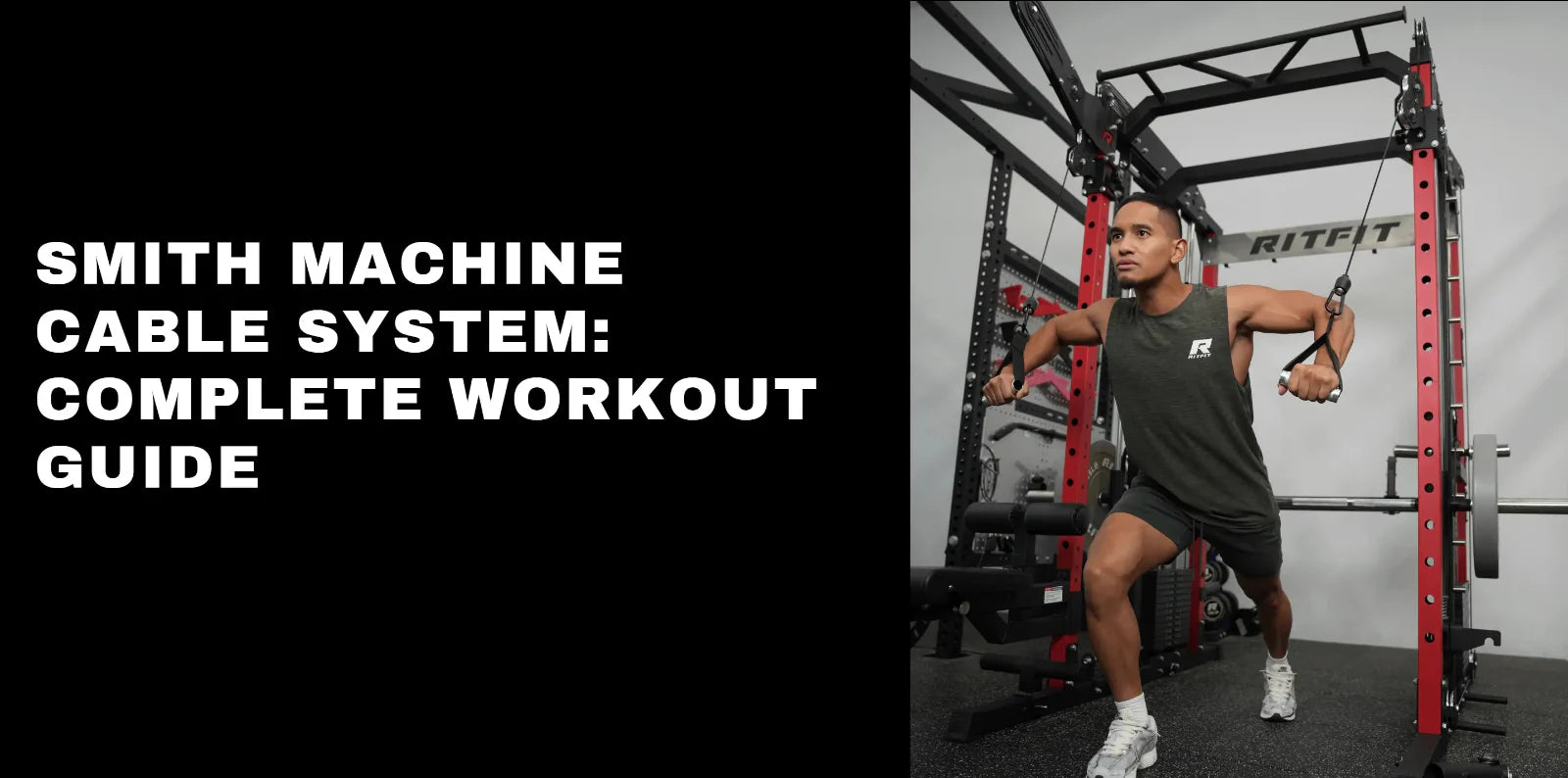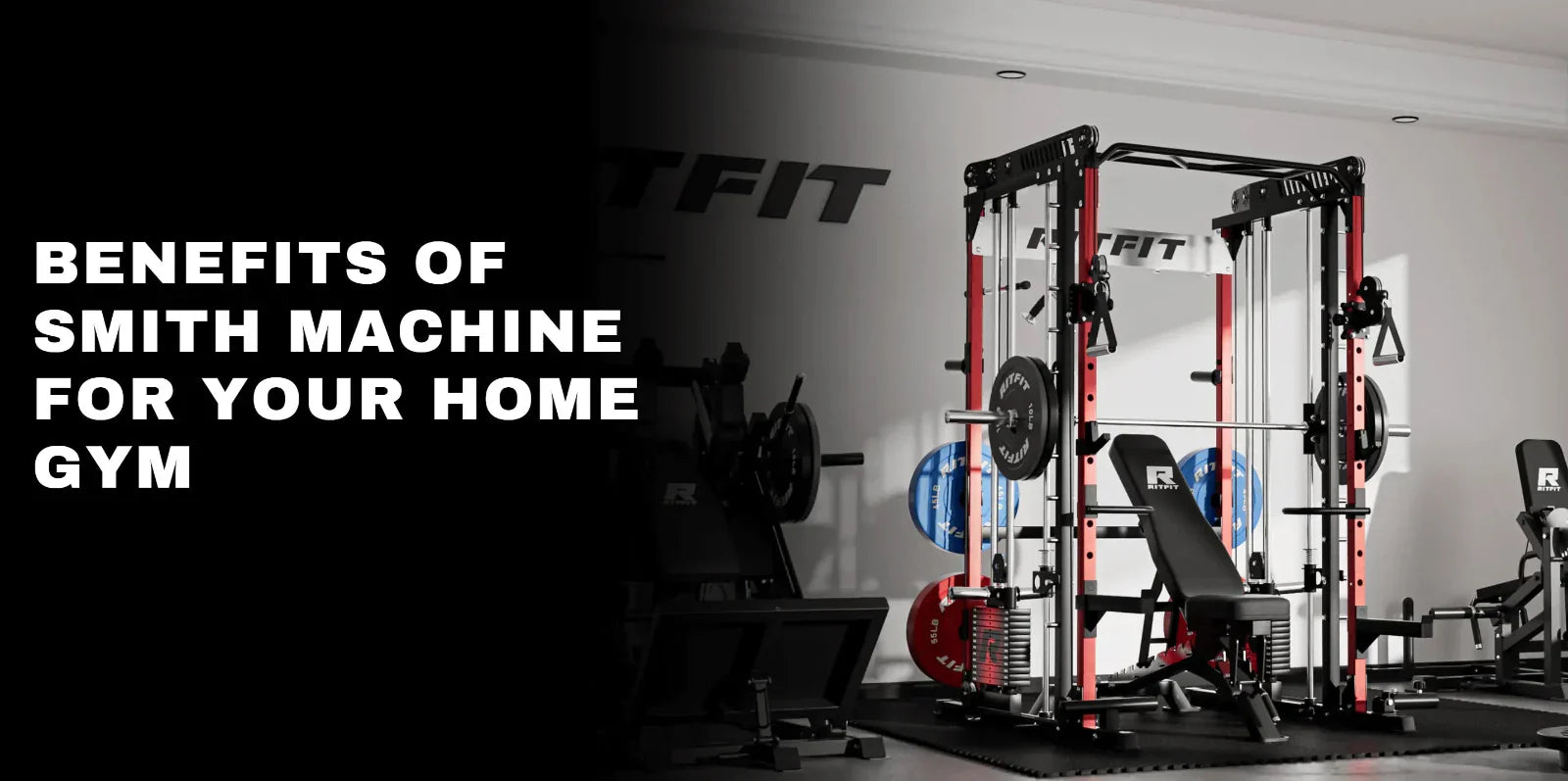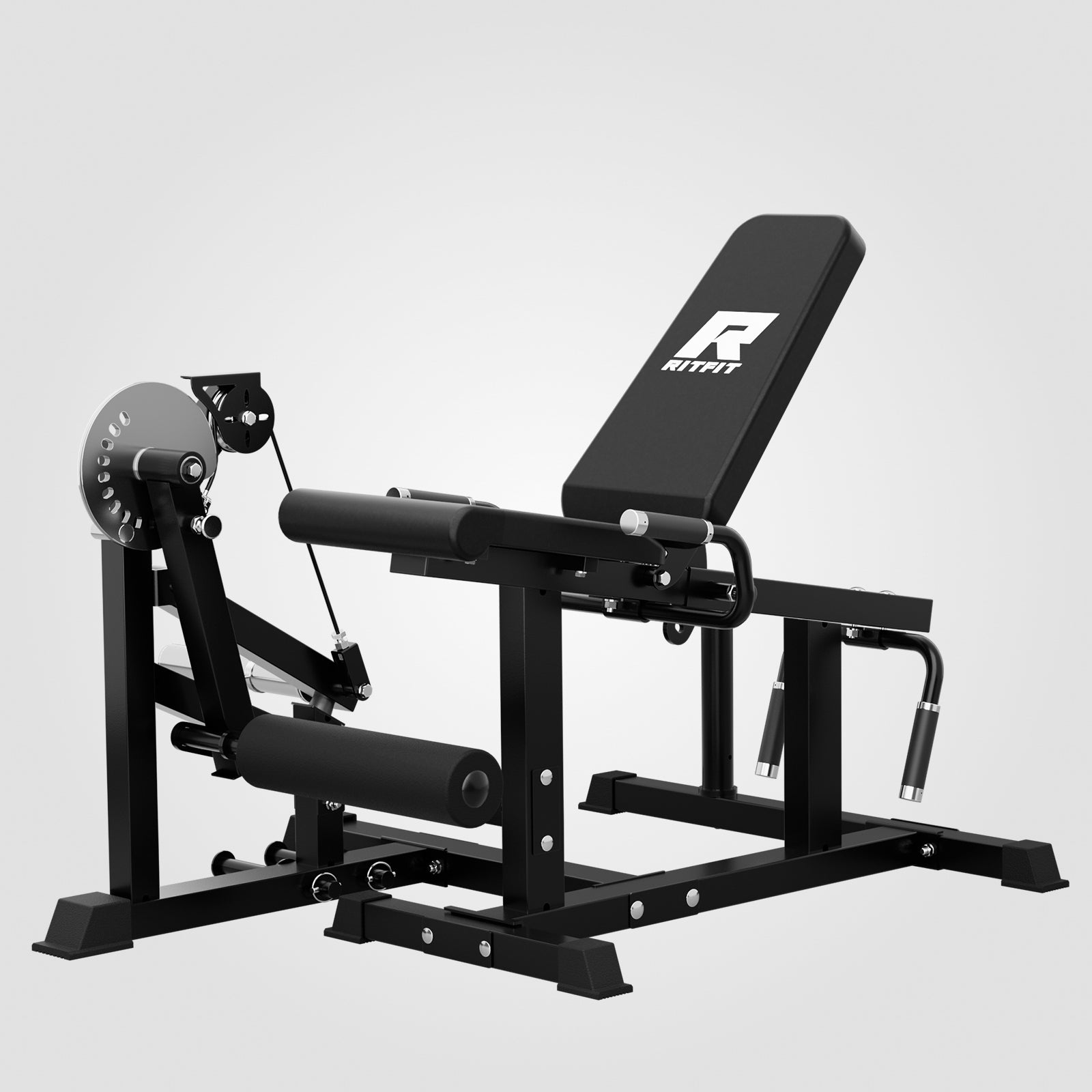Table of Contents
- What Is a Smith Machine with a Cable System?
- Why a Smith with Cable Combo Is Perfect for Home & Garage Gyms
- Getting Set Up: Safety, Adjustments & Basics
- Movement Library: Best Smith Machine + Cable Exercises
- Complete Workout Templates (Only Smith + Cables)
- How to Progress Safely
- Common Mistakes to Avoid
- Choosing (or Upgrading) Your Smith Machine with Cable System
- Final Thoughts: Turn Your Combo into a Home Training Studio
- FAQs About Smith Machine Cable Workouts
If you’ve got (or are eyeing) a Smith machine with cable system for your home or garage gym, you’ve basically bought yourself a compact training studio; you just need to know how to use all of it.
I work with a lot of home gym athletes who want one machine that does almost everything: squats, presses, rows, pulldowns, curls, glutes, and core work. A good Smith + cable combo like the RitFit M1 PRO ,M2 or BUFFALO Multifunctional Smith Machine is designed for exactly that kind of full-body, efficient training.
In this guide, I’ll walk you through:
What a Smith machine with a cable system actually is
Why it’s such a strong choice for home gyms
The best exercises you can do with it
Ready-made workout templates (3-day full body, upper/lower, PPL)
How to progress safely and avoid common mistakes
My goal is simple: by the end, you’ll feel confident using your home gym Smith cable combo as your primary (or only) training tool.
What Is a Smith Machine with a Cable System?
A Smith machine with a cable system combines several pieces of gym equipment into one frame:
- A Smith bar on rails: The bar moves on fixed tracks with hooks that catch on multiple height settings for safety.
- Adjustable cable pulleys: Usually dual-pulley columns on each side; you can slide them up and down for rows, pulldowns, curls, pressdowns, flies, etc.
- Rack features: Many systems, like the RitFit M1 PRO and the more customizable RitFit M2 Modular Home Gym, also include J-hooks, safety arms, and a pull-up bar, so the unit functions as a squat rack and half rack as well. The M2 takes this a step further with modular add-ons, allowing users to configure the machine based on fitness level and available space while still keeping all-in-one functionality.
- Lat pulldown/cable crossover: Especially in dual-sided setups like the BUFFALO, which combines Smith, power rack, functional trainer, and cable crossover in one multi-station design.
Compared to:
- Standalone Smith machine: You’re limited mostly to barbell-style patterns.
- Basic power rack: great for free bar work, but no cables unless you add a separate attachment.
- Single cable tower: awesome for isolation work, but not ideal for heavy squats, presses, or hip thrusts.
The combo gives you all three worlds in one footprint: barbell-style strength, cable versatility, and a rack for pull-ups and safety, with the M2 offering a modular configuration option for users who want a more personalized home gym setup.
Why a Smith with Cable Combo Is Perfect for Home & Garage Gyms
Built for Training Alone (With Less Worry)
If you train in your garage at 6 a.m. or at night when the kids are asleep, you don’t always have a spotter.
The Smith bar rails plus safety catches let you:
- Set a bottom position for squats, bench, or hip thrusts
- Fail a rep and simply rotate the bar or rest on the safeties
- Focus on form and effort instead of worrying if you’ll get pinned
- Many home gym Smith systems, like the M1 series, are rated for high load capacity and use smooth linear bearings, which keep the motion predictable and joint-friendly.
Full-Body Training on One Machine
Between the Smith bar and adjustable cables, you can cover:
- Lower body – squats, lunges, RDLs, hip thrusts, pull-throughs
- Upper body push – bench, incline press, shoulder press, cable chest fly, lateral raise
- Upper body pull – rows, lat pulldowns, face pulls, curls
- Core – woodchops, Pallof press, cable crunches
Systems like RitFit M1 PRO and BUFFALO explicitly market themselves as all-in-one home gym solutions, complete setups that replace separate racks, cable machines, and lat towers.
Space & Budget Efficient
Instead of buying:
- A power rack
- A standalone lat pulldown
- A cable crossover
- A separate Smith
You get one integrated frame that fits in a single wall or corner. RitFit’s Smith line is designed specifically for home gym ceilings and footprints, giving you commercial-style function without needing commercial gym space.
Joint-Friendly & Confidence-Boosting
For beginners, busy parents, or anyone with cranky knees/shoulders:
The guided bar path reduces the stabilizing demand and wobble.
Cables let you fine-tune angles and range of motion so that you can train around mild joint irritation.
Research indicates that while free weights require more stabilization, stable environments (like Smith machines) allow for higher force production in prime movers[1]. You can gradually introduce free-weight variations later if you want, but you don’t have to in order to make gains.
Getting Set Up: Safety, Adjustments & Basics
Before we talk workouts, let’s make sure your setup is safe and efficient.
Setting Up the Smith Bar
For each major exercise:
Squats
Set the bar slightly below shoulder height so you can unrack without tiptoeing.
Position safeties at or just below your lowest squat depth.
Bench Press
Place the bench so your eyes are under the bar.
Set safeties just above chest level so the bar can’t crush your ribs if you fail.
Hip Thrusts
Align the bench with your upper back.
Start with the bar in the hooks at about hip height when seated; set safeties just below the bottom of your thrust.
Most modern Smith systems (including M1 and Buffalo) have multiple height notches for both bar and safeties, so take a minute to experiment and save your “default” settings for next time.
Dialing in the Cable System
Think of cable height in three zones:
- High pulley – triceps pressdowns, face pulls, woodchops
- Mid pulley – cable rows, chest flies, lateral raises
- Low pulley – curls, upright rows, pull-throughs
On systems like the M1 PRO, you typically get many pulley positions and a 2:1 ratio, meaning the movement feels smooth and controllable for both light rehab-style work and heavier strength work.
Warm-Up Checklist (5–8 Minutes)
- 2–3 minutes light cardio (marching, bike, jump rope).
- 1–2 mobility moves each for hips and shoulders (leg swings, arm circles).
- 1–2 light sets of your first main exercise before going heavy.
Research indicates that specific warm-up protocols significantly improve power output and range of motion during subsequent resistance exercise[2].This is a small time investment that pays off in fewer tweaks and better performance.
Movement Library: Best Smith Machine + Cable Exercises
Below is your quick library. You don’t have to use all of these at once; think of it as a menu.
Lower Body (Smith + Cables)
Smith Squat
Targets: Quads, glutes
How: Stand with feet slightly in front of the bar line so your shins stay fairly vertical. Sit “between your heels,” keep chest proud, and drive up through mid-foot.
Coaching tip: If your knees hurt, try a slightly narrower stance and focus on driving your knees in line with your toes.
Smith Romanian Deadlift (RDL)
Targets: Hamstrings, glutes
How: Soft knees, hinge your hips back while keeping the bar close to your legs. Stop when you feel a strong stretch in the hamstrings, then drive your hips forward.
Common mistake: Turning it into a squat. Your hips should move back more than your knees bend.
Smith Bulgarian Split Squat
Targets: Quads and glutes (one leg at a time)
How: Rear foot elevated, front foot under bar. Lower under control, aiming for vertical torso or slight forward lean.
Why it’s great for home gyms: You don’t need huge weights to make this brutal and effective.
Smith Hip Thrust / Glute Bridge
Targets: Glutes, some hamstrings
How: Upper back on bench, feet flat. Push through heels, tuck your pelvis slightly at the top.
Cue: “Squeeze a coin between your glutes at the top.”
Cable Pull-Through
Targets: Glutes, hamstrings
How: Low pulley behind you with rope attachment. Hinge forward, then snap hips through.
Joint-friendly note: Great option if traditional deadlifts bother your lower back.
Upper Body Push (Chest & Shoulders)
Smith Flat Bench Press
Targets: Chest, front delts, triceps
How: Eyes down and under the bar, mild arch in lower back, feet flat. Lower bar toward the low chest/upper rib cage, press up with control.
Shoulder-friendly tweak: Keep elbows from flaring to 90 degrees. Ideally, at a 45–60° angle away from your torso.
Smith Incline Bench Press
Targets: Upper chest and shoulders
How: Bench at 25–35° incline. Same as flat, but the bar only slightly touches higher up on the chest.
Good for: Lifters with aesthetic aspirations who need more upper chest pop without putting all their eggs (and sets) into the basket of free barbell incline.
Shoulder Press of Smith (Seated or Standing)
Targets: Delts, triceps
How: Hold just outside shoulder width. You’ll press the bar over your head, while keeping your back from going into a dramatic arch.
Tip: Squeeze glutes, brace abs as if you are about to be lightly punched in the stomach.
Cable Chest Fly (High-to-Low or Low-to-High)
Targets: Chest
How: Adjust pulleys to chest height (for standard) or slightly low/high for angle variations. Hug a tree, slight elbow bend, big chest squeeze.
Cable Lateral Raise
Targets: Side delts
How: Stand sideways to the stack, raise the handle out to the side with a slight elbow bend.
Why cables: Smooth resistance keeps tension on the muscle throughout the whole movement.
Upper Body Pull (Back & Biceps)
Cable Lat Pulldown
Targets: Lats, upper back
How: Sit tall, pull the bar or handles toward your upper chest, and focus on driving your elbows down and back.
Avoid: Pulling behind the neck, no benefit, more shoulder risk.
Cable Seated or Standing Row
Targets: Mid-back, lats
How: Neutral spine, row handle toward lower ribs, squeeze shoulder blades together.
Cue: “Proud chest, don’t let shoulders roll forward.”
Smith Bent-Over Row
Targets: Lats, rhomboids, rear delts
How: Slight bend in knees, hinge at hips, row bar toward mid-belly.
Cable Face Pull
Targets: Rear delts, upper back, rotator cuff
How: Use rope at upper-chest height, pull toward forehead with elbows high.
Shoulder health: One of my favorite “posture rescue” moves for home lifters.
Cable Biceps Curl
Targets: Biceps
How: Elbows pinned near your sides, curl the bar/rope without swinging.
Core & Anti-Rotation
Cable Pallof Press
Targets: Deep core, anti-rotation strength
How: Stand side-on to the stack, hold the handle at chest, press straight out. Resist being pulled sideways.
Cable Woodchop
Targets: Obliques
How: High-to-low or low-to-high pattern, rotating torso while maintaining control.
Cable Crunch or Rope Crunch
Targets: Rectus abdominis
How: Kneeling, rope behind neck, think “rib cage toward pelvis” rather than yanking with arms.
Complete Workout Templates (Only Smith + Cables)
You don’t need to invent your program. Pick one template that fits your schedule and stick with it for 6–8 weeks.
Option 1: 3-Day Full-Body Routine
Train 3 days/week (e.g., Mon–Wed–Fri). Rest or do light activity on off days.
Day A – Squat + Push Focus
- Smith Squat – 3×8–10
- Smith Flat Bench Press – 3×8–10
- Cable Row – 3×10–12
- Cable Lateral Raise – 3×12–15
- Cable Pallof Press – 3×12–15/side
Day B – Hinge + Pull Focus
- Smith Romanian Deadlift – 3×8–10
- Cable Lat Pulldown – 3×8–10
- Smith Shoulder Press – 3×8–10
- Cable Biceps Curl – 3×10–12
- Cable Triceps Pressdown – 3×10–12
Day C – Glutes + Accessories
- Smith Bulgarian Split Squat – 3×8–10/leg
- Smith Hip Thrust – 3×10–12
- Cable Chest Fly – 3×10–12
- Cable Face Pull – 3×12–15
- Core of choice (woodchop or crunch) – 3×12–15
Guidelines:
Rest 60–90 seconds between sets.
Choose a weight that leaves 1–2 reps in the tank on most sets.
Once you hit the top of a rep range comfortably, add a small amount of weight next session.
Option 2: 4-Day Upper/Lower Split
Great for people who want slightly more volume but still have a busy life.
Day 1 – Lower (Squat Focus)
- Smith Squat – 4×6–8
- Smith RDL – 3×8–10
- Cable Pull-Through – 3×10–12
- Cable Calf Raise (using low pulley) – 3×12–15
Day 2 – Upper (Push Focus)
- Smith Flat Bench – 4×6–8
- Smith Incline Bench – 3×8–10
- Cable Chest Fly – 3×10–12
- Cable Lateral Raise – 3×12–15
- Triceps Pressdown – 3×10–12
Day 3 – Lower (Glute & Unilateral)
- Smith Bulgarian Split Squat – 3×8–10/leg
- Smith Hip Thrust – 4×8–10
- Cable Leg Curl (if attachment allows) or more pull-throughs – 3×10–12
- Core: Cable Pallof Press – 3×12–15/side
Day 4 – Upper (Pull Focus)
- Cable Lat Pulldown – 4×8–10
- Smith Bent-Over Row – 3×8–10
- Cable Face Pull – 3×12–15
- Cable Biceps Curl – 3×10–12
Option 3: Push / Pull / Legs (PPL)
Best if you enjoy training 5–6 days per week and recover well.
- Push: Smith bench, incline, shoulder press, cable fly, lateral raise, triceps
- Pull: Lat pulldown, Smith row, cable row, face pull, biceps, rear delt
- Legs: Squat, RDL, Bulgarian split squat, hip thrust, pull-throughs, calves
You can run it as:
- 3 days/week (P–P–L once each)
- 6 days/week (P–P–L–off–P–P–L–off) rotating exercises and rep schemes
If you’re newer or very busy, start with the 3-day full body and “graduate” to upper/lower or PPL later.
How to Progress Safely
You do not need to max out or chase one-rep PRs to make great progress on a Smith + cable combo.
Week-to-Week Progression
Keep a simple log (app or notebook).
When a weight feels manageable across all sets at the top of the rep range, increase the load next time by the smallest available increment. Progressive overload is the primary driver of musculoskeletal adaptation in resistance training programs[3].
Alternatively, keep weight the same and add 1 set for a lift you want to prioritize (e.g., hip thrusts or bench).
6–8 Week Simple Plan
- Weeks 1–2: Learn the movements. Moderate load, focus on technique and confidence.
- Weeks 3–5: Gradually increase weight or reps. Push sets to about 1 rep shy of failure.
- Weeks 6–7: Maintain or slightly increase where you still feel strong.
- Week 8: Deload use ~70% of usual load or do 1 fewer set per exercise.
If you experience persistent joint pain, not just normal muscle soreness, reduce the load, shorten your range of motion, and consult a healthcare professional or a qualified fitness professional, especially if you have a medical condition or recent injury.
Common Mistakes to Avoid
Ignoring the Safeties
Fix: Always set safeties for squats, presses, and hip thrusts so a failed rep is a non-event.
Standing Directly Under the Smith Bar
Fix: For many lower-body moves, you’ll want your feet slightly in front of the bar to keep your torso more upright and knees happy.
Random Cable Heights
Fix: Take 10 seconds to line up cables with the movement path (chest height for fly, forehead/chest for face pulls, low for curls and pull-throughs).
Too Much Weight, Not Enough Control
Fix: For home gym lifters especially, prioritize smooth reps over loading to impress… well, nobody.
Program Hopping
Fix: Choose one template above and stick with it for at least 6 weeks before making big changes.
Choosing (or Upgrading) Your Smith Machine with Cable System
If you’re still shopping or thinking about an upgrade, here are key features to look for:
- Stable frame and high load capacity – so you feel secure under heavier loads.
- Smooth Smith bar track with multiple height settings – for easy setup across exercises.
- Dual adjustable pulleys with plenty of positions – for rows, flies, curls, and all the fun accessory work.
- Pull-up bar and rack-style features – so you don’t need a separate rack.
- Compact footprint – important for basements and garages.
The RitFit M1 PRO Multifunctional Smith Machine is a good example of a compact, all-in-one home gym station with a Smith bar, squat rack, cable crossover system, and pull-up bar built into a single unit.
The RitFit BUFFALO Multifunctional Smith Machine adds a dual-sided design with lat pulldown and cable crossover, making it great for families or partners who want to train together using both Smith and cables at the same time.
The RitFit M2 Multi-Functional Modular Smith Machine expands on this versatility with a modular design, allowing users of all fitness levels to customize attachments and training stations as their goals evolve. If you prefer a system that grows with you, the M2 delivers the most flexibility without sacrificing stability, smoothness, or space efficiency.
This guide uses RitFit equipment as examples because we design home-gym–focused Smith combinations. Recommendations are based on our in-house testing and customer feedback.
Final Thoughts: Turn Your Combo into a Home Training Studio
You don’t need a huge commercial gym or a room full of machines. With a well-designed Smith machine with cable system, smart exercise choices, and a simple progression plan, you can:
Train your entire body safely
Build muscle and strength steadily
Stay consistent as a busy professional or parent
You’ve already invested in the equipment, or you’re seriously considering it. Now it’s about investing in your reps and consistency.
Pick one of the routines above, set your safeties, adjust your pulleys, and start training like your home gym is the most convenient studio you’ll ever own.
FAQs About Smith Machine Cable Workouts
Q: Can I build real muscle with just a Smith machine with a cable system?
Yes. If you progressively overload (more weight/reps over time), eat enough protein, and recover, you can build serious muscle using just your Smith + cable combo. Systems like the M1 and BUFFALO are explicitly designed as all-in-one home gyms for full-body strength training.
Q: Is this setup joint-friendly if I’ve had knee or shoulder issues?
Often, yes, if you respect your limits. The guided bar path and adjustable cables let you tweak angles and ranges. Start lighter, avoid pain, and don’t be afraid to shorten the movement slightly at first.
Q: How many days per week should I train?
Most home gym users do well with 3–4 days/week. If life is hectic, start with 3 full-body sessions. If you recover well and love training, move to a 4-day upper/lower or a PPL structure.
Q: Do I still need dumbbells or a barbell set?
They’re nice to have, but not mandatory. A well-designed home gym Smith cable combo already covers the big rocks: squats, hinges, pushes, pulls, glutes, and core. Add dumbbells later if you want more exercise variety.
Q: How long should each workout take?
Most of the templates above can be finished in 35–50 minutes, depending on your rest times and how many warm-up sets you do.
References
- Schwanbeck S, Chilibeck PD, Binsted G. A comparison of free weight squat to Smith machine squat using electromyography. J Strength Cond Res. 2009;23(9):2588-2591. doi:10.1519/JSC.0b013e3181b1b181
- Neves PP, Marques DL, Neiva HP, et al. Impact of Re-Warm-Up During Resistance Training: Analysis of Mechanical and Physiological Variables. Sports (Basel). 2025;13(5):142. Published 2025 May 7. doi:10.3390/sports13050142
- Schoenfeld BJ, Pope ZK, Benik FM, et al. Longer Interset Rest Periods Enhance Muscle Strength and Hypertrophy in Resistance-Trained Men. J Strength Cond Res. 2016;30(7):1805-1812. doi:10.1519/JSC.0000000000001272
This blog is written by the RitFit Editorial Team, who have years of experience in fitness industry and marketing. All content is based on our hands-on experience with RitFit equipment and insights from our users.


